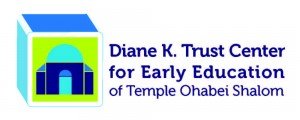Frogs, Frogs, and More Frogs: Making Passover Accessible to Young Children
by Emma Hahn, TCEE Assistant Director
Every spring, as the ground thaws and hints of green start peeking out from the cold, bare landscape, educators at Jewish early education programs have the same conversation: how do we make Passover accessible to young children? Passover, Pesach (pay-sa-ch) in Hebrew, is one of the most important holidays in the Jewish calendar. It is a week-long holiday where we tell the story of the Jewish People’s escape from slavery in Egypt. If you’ve ever seen the movie The Prince of Egypt, you have some familiarity with the story of Passover.
The holiday begins with a traditional meal called a seder (say-dur), the Hebrew word for “order”. The order of the seder is of critical importance; though every family’s and every congregation’s seder looks a little different, the structure of it is always the same – there are moments to wash your hands, say blessings, and participate in small rituals like eating parsley dipped in salt water, built around the retelling of the Passover story and the festive meal. This all seems completely appropriate for young children, right?
That is, until we start telling the story. Right at the outset, we discuss slavery. How to explain to a three-year-old that there are people in the world who think it’s their right to force other people to work with no time to rest and for nothing in return?
Then, we move to the part of the story where Pharoah proclaims that all Jewish infant sons must be drowned in the Nile. Moses’s mother places him in a basket and floats him down the river in the hopes that he will survive. In this short introduction to Moses, we touch upon two more difficult topics: death and, arguably scarier for young children, being separated from your family.
As Moses grows up, part of the Egyptian royal family after the Pharaoh’s daughter pulls his basket from the river, the story is somewhat easier to tell. Moses as a young man sees an Egyptian overseer “being mean” to a Jewish slave; Moses steps in and stops the overseer. In the adult story, Moses kills the man by accident, though when we tell it to children, we skip that part. Moses then leaves Egypt and settles in a small village where he lives as a shepherd for many years.
When Moses is commanded by God, through a burning bush, to return to Egypt and free his people, we get to the part of the story that children love most: Moses tells Pharaoh, “let my people go!” Chances are, if you’re in the building at all over the next few weeks, you’ll hear a chorus of small voices calling out “let my people go!”
And then come the Ten Plagues. Which of these can we address with young children and not cause nightmares for years to come? The river turning to blood? Sudden darkness blanketing everything, even in the middle of the day? All of the animals dying? Boils or hail or locusts or lice? Every firstborn Egyptian child dying?
No, none of these. Frogs. The answer for Jewish educators of young children has, for years, been the frogs. What could be funnier than Pharaoh waking up in the morning to frogs in his bed and frogs on his head? Children see this as the unusual disruption that it is, without the insidiousness of the other nine plagues. It’s a simple lens through which we can explain that, every time Pharaoh said no to Moses, God defended the Jewish People by making life harder for Pharaoh and the Egyptians. When Pharaoh finally says yes, and the Jewish People go free, God parts the Red Sea for them to pass through on dry land. And on the other shore, we sing and dance and celebrate our freedom.
So, we’ll float baby Moses down the river in his basket, we’ll taste the foods from the seder plate and sing “let my people go!” as loud as we can. We’ll find the Afikomen and compare matzah dough and challah dough to try and understand what “unleavened” means. We’ll introduce the kids to the joy of Judaism, the triumphant pride of a people who refuse to die, despite all the times others have tried to kill us. And we’ll save the darkness, the pain and suffering and other nine plagues, for when they’re a little older, a little more ready for a story with this much death and destruction. For now, we’ll let Passover be about chocolate covered matzah, parsley growing on the windowsill, and frogs. Always, always frogs.


